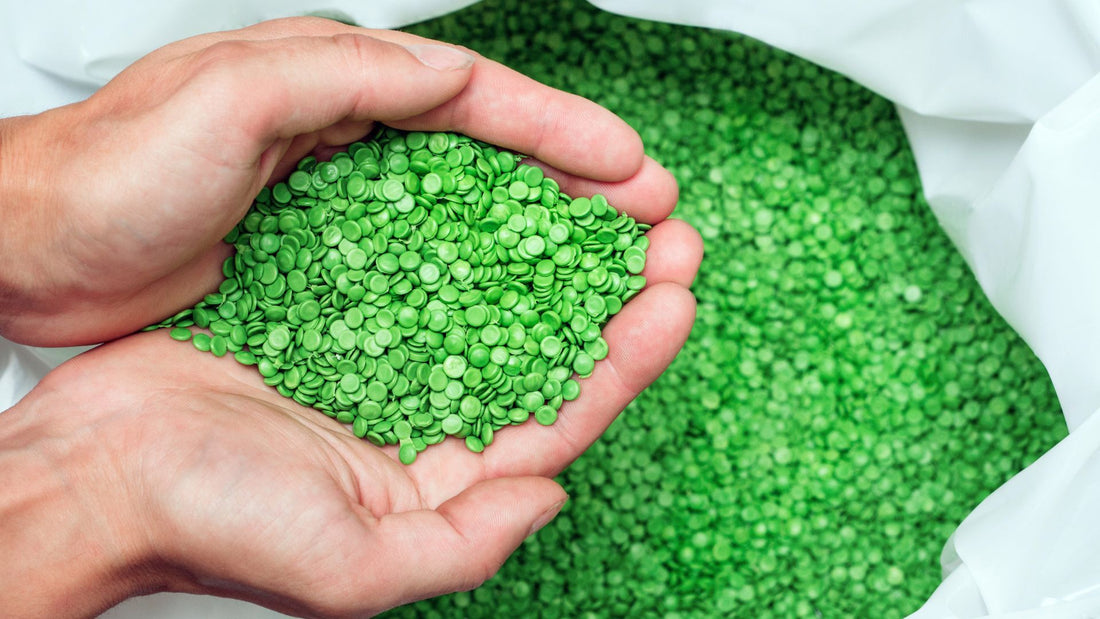
Bio-Plastic Vs. Plastic
Share
What are the main differences between bioplastics, biodegradable plastic and traditional plastics? Biotuff takes an in-depth look into the history of our love for plastic and how to understand the differences between bioplastics and biodegradable plastic.
Plastic plastic everywhere! The one common ground across the globe is humanity's insatiable appetite to use plastic in every aspect. Hailed as the hero of its time, plastic has reined in popularity for decades. Interestingly the Plastic Age of the 20th and 21st centuries was born out of an environmental looming disaster. Researchers pushed for a more friendly option as elephants and turtles bore the brunt of the chosen material for many household items (considered natural plastic). This saw the birth of the incredibly popular synthetic plastics that coat the earth today.
Leo Baekeland, a Belgian chemist, was the very first to pioneer the first synthetic plastic back in 1907. Creating durable products that were also very affordable, plastic quickly became the go-to product for many industries. It was also the perfect solution to dispose of waste material from processing crude oil and natural gas.
Plastic was hailed as a great success and an environmental breakthrough in its early days. It replaced more expensive items such as glass, metal, and paper packaging and materials and was deemed easy to throw away and hassle-free. Consumers couldn't get enough, and soon, everything was made of plastic, and classic materials were quickly replaced with a plastic option.
The Environmental Fallout - Plastic
The creators could not have envisioned that this development would lead to a worldwide environmental disaster. However, it quickly became apparent that plastic could not easily be disposed of. As this product started to fill landfills worldwide, many began to question the environmental impact of this wonder material. Oceans filled, landfills overflowed, and the ecological effects began to impede on every corner of the world.
Plastic was discovered to take tens of thousands of years to break down, and this process was also deemed an additional environmental concern – the microscopic particles started to pollute our fragile ecosystems, the air we breathe, and our oceans. In a desperate attempt to solve the problem, the rise of recycling increased.
As we throw our plastic waste into recycling bins, many consider the use of plastic to be OK. However many recycled products were sent to countries that would burn the waste or increase emissions from making additional plastic products. Sadly, this created more problems for our fragile environment seeing the recycling industry screaming for change.
When China shut its doors to recyclable plastic waste back in 2018, the problem escalated leaving many recycling stations at a loss to where to send their plastic. It is commonly known that the only way to prevent the plastic problem that continues to grow is to stop manufacturing this product and look towards a more sustainable option.
According to OECD, global plastic waste is set to almost triple by 2060. They noted that without radical action to curb demand, increase product lifespans, and improve waste management and recyclability, plastic pollution will rise in tandem with an almost threefold increase in plastic use. Their report indicates that in 2060 most plastic waste will be driven from packaging and low-cost products and textiles.
Enter Biodegradable Plastic
It all sounds pretty doom and gloom for our beautiful planet. But there is good news on the horizon – cue the creation of biodegradable plastic. As the research raced to find a better alternative to help the environment while also replacing the plastic boom, biodegradable plastics were born. These products reduce the use of fossil fuels, plus many are biodegradable and compostable. As a result, they are reducing emissions and becoming a more sustainable option for many consumers. However, it is essential to understand that not all bio-based plastics are developed the same.
What is Bioplastic?
Bioplastics are made partly from biological matter; however, some pose the same problem as traditional plastic – they may have the least environmental impact when being created, but they also have the same environmental impact when it comes to degrading. Although they contain renewable sources, some also contain elements that cannot biodegrade, particularly in a reasonable timeframe. When you also consider that some non-biodegradable bioplastics take the same time to break down as traditional plastics, it is up to the consumer to understand and know the difference when choosing their environmentally friendly products.
What are Biodegradable Plastics?
Biodegradable plastics are just that – they can break down completely in a reasonable timeframe. They are derived from sustainable and renewable sources and produced with plant-based thermoplastic corn starch containing no GMOs. As a result, they reduce emissions and encourage composting – a more intelligent way of reducing household waste. Biodegradable plastic also uses less energy to produce products and is much less toxic than its plastic predecessor.
Make An Educated Choice
When it comes to any plastic alternative, it's crucial to understand how to dispose of these items correctly. Consumers are encouraged to contact their local councils to get a clear picture of how to correctly dispose of bioplastics or biodegradable plastics. Not all products are created equally. Doing your research on the bioplastics you choose to use is important. Making a greener choice also comes with the responsibility of clever disposal, regardless of their ability to break down in landfill. Opting for a council-run composting facility can increase the product's ability to break down quickly. Many bioplastics are unsuitable for council collection through their composting choices, such as FOGO. Getting informed on disposal and choosing biodegradable products is a good step forward.
Consumers can become composting savvy and make educated on the choices on the products they choose to support with some simple research. Choosing brands that are not only easily disposed of but are also 100% biodegradable is the more environmentally sound way to reduce emissions and landfill waste. Paving the way to a greener and more sustainable future for plastic consumption.

We will only handle press inquiries. If you have questions regarding an order please contact our customer care. media@biotuff.com.au
In the spirit of reconciliation, Biotuff Australia acknowledges the Traditional Custodians of the country throughout Australia and their connections to land, sea and community.
We pay our respects to their elders past, present and emerging, and extend that respect to all Aboriginal and Torres Strait Islander peoples today and everyday.
